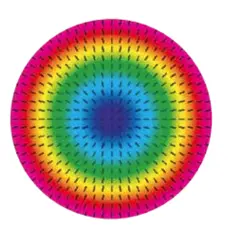MyoSphere
Myopia is becoming more common. Indeed, statistics indicate a constant and significant increase over the past 20 years. Today one third of the world’s population is short-sighted. The trend suggests a constant growth with a projection that leads to exceed the 50% threshold in 2050.
Research shows that the causes are in the change of lifestyle habits, especially for the increase of visual activity at short distance. In most cases, this is due to digital devices and, therefore, the time spent outside is less.
A study shows that more than 60% of cases of myopia develop from 6/7 years until adolescence, Prevention and the adoption of precautionary measures are therefore fundamental. It is important to limit its progress as quickly as possible.
To meet this need, Glacium has introduced MyoSphere, a circular defocus objective, precisely in order to limit the development of myopia progression in children and adolescents.
The concept of MyoSphere lens
The front of this glass is composed of hundreds of small segments of convex power, in the shape of a honeycomb, ensuring myopic defocusing. Its cosmetic appearance is smooth and similar to that of conventional single vision lenses.
With a classic unifocal glass, the central image is well positioned on the retina but in the peripheral area, the image is located behind the retina (orange diagram). The eye will then lie down to compensate for the induced blur.
The specific geometry of the GLACIUM MYOSPHERE glass ensures myopic defocus, which allows the peripheral images to be brought back in front of the retina and thus slow down the elongation of the eye (blue diagram).

LENS
MyoSphere has a central fixed power zone of diameter 9 to 11 mm, calculated from the actual base value and the power value of the requested target.
From the central area to the edge of the glass, MyoSphere has a power degressivity. The result is a unique vision lens with circular defocusing. Defocusing changes the focus points to follow the curve of the retina of the eye as accurately as possible.
Thanks to the ray tracing technique, from the center of the lens to the periphery, the cylinder slowly increases with the radial direction and the power decreases. Compared to traditional myopia lenses, MyoSphere lenses are thinner.

BABY MYOSPHERE
For children from 4 to 6 years.
Defocus of about 2.5D. The central circular zone oscillates in diameter between 9 and 10 mm.
MYOSPHERE JUNIOR
For children from 7 to 12 years.
Defocus of about 1.6D. The central circular zone oscillates in diameter between 10 and 12 mm.
TEEN MYOSPHERE
For teenagers aged 13 to 18.
Defocus of about 1.0D. The central circular zone oscillates in diameter between 11 and 18 mm.